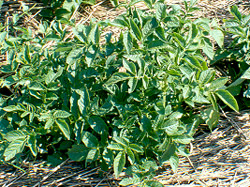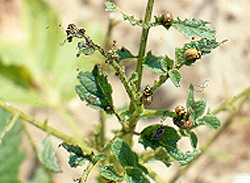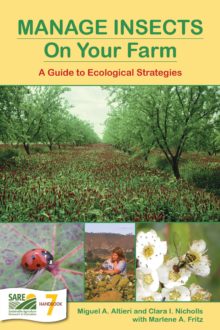
Managing Pests With Healthy Soils
Healthier soils produce crops that are less damaged by pests. Some soil-management practices boost plant-defense mechanisms, making plants more resistant and/or less attractive to pests. Other practices — or the favorable conditions they produce — restrict the severity of pest damage by decreasing pest numbers or building beneficials. Using multiple tactics — rather than one major tactic like a single pesticide — lessens pest damage through a third strategy: it diminishes the odds that a pest will adapt to the ecological pest management measures.
Practices that promote soil health constitute one of the fundamental pillars of ecological pest management. When stress is alleviated, a plant can better express its inherent abilities to resist pests (Figure 2). Ecological pest management emphasizes preventative strategies that enhance the “immunity” of the agroecosystem. Farmers should be cautious of using reactive management practices that may hinder the crop’s immunity. Healthier soils also harbor more diverse and active populations of the soil organisms that compete with, antagonize and ultimately curb soil-borne pests. Some of those organisms — such as springtails — serve as alternate food for beneficials when pests are scarce, thus maintaining viable populations of beneficials in the field. You can favor beneficial organisms by using crop rotations, cover crops, animal manures and composts to supply them with additional food.

In southern Georgia, cotton and peanut growers who planted rotation crops and annual high-residue winter cover crops, then virtually eliminated tillage, no longer have problems with thrips, bollworms, budworms, aphids, fall armyworms, beet armyworms and white flies. The farmers report that the insect pests declined after three years of rotations and cover crops. They now pay $50–$100 less per acre for more environmentally benign insect control materials such as Bacillus thuringiensis (Bt), pyrethroids and/or insect growth regulators.

In their no-till research plots with cover crops and long rotations, University of Georgia scientists haven’t needed fungicides for nine years in peanuts, insecticides for 11 years in cotton, and insecticides, nematicides or fungicides for 17 years in vegetables. They also are helping growers of cucumbers, squash, peppers, eggplant, cabbage peanuts, soybeans and cotton reduce their pesticide applications to two or fewer while harvesting profitable crops. This system is described in greater detail in Managing Cover Crops Profitably, 2nd Edition (Resources).
As many as 120 species of beneficial arthropods have been found in southern Georgia soils when cotton residues were left on the surface and insecticides were not applied. In just one vegetable-growing season, 13 known beneficial insects were associated with cover crops. When eggplant was transplanted into crimson clover at 9 a.m., assassin bugs destroyed Colorado potato beetles on the eggplant by evening. Similarly, other beneficials killed cucumber beetles on cucumber plants within a day.
Underlying those benefits, according to the Georgia researchers, was the soil-improving combination of cover crops with conservation tillage: soil organic matter increased from less than 1 percent to 3 to 8 percent in most of their plots, and a majority of growers saw similar improvements in soils and pest management.
TIP: Encourage beneficial organisms by using crop rotations, cover crops, animal manures and composts to supply them with additional food.
TIP: To support beneficial soil organisms, plant cover crops and allow their residue to accumulate on the soil surface.
